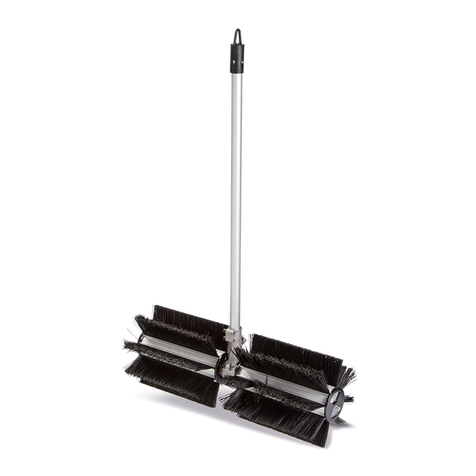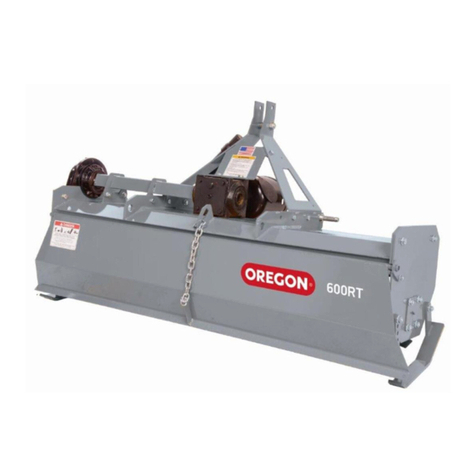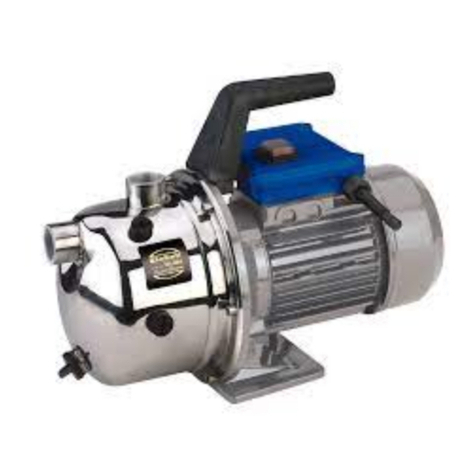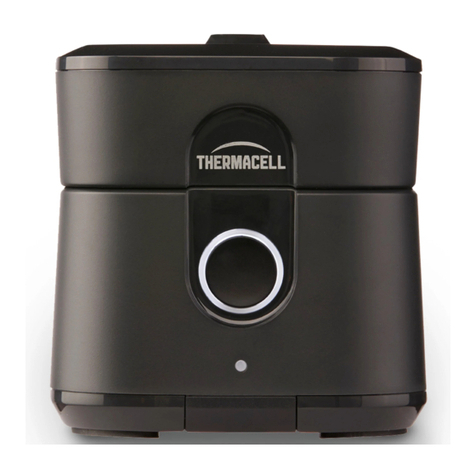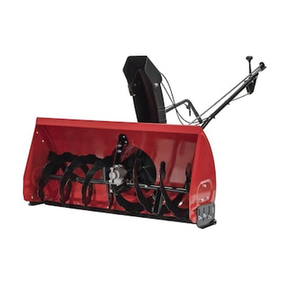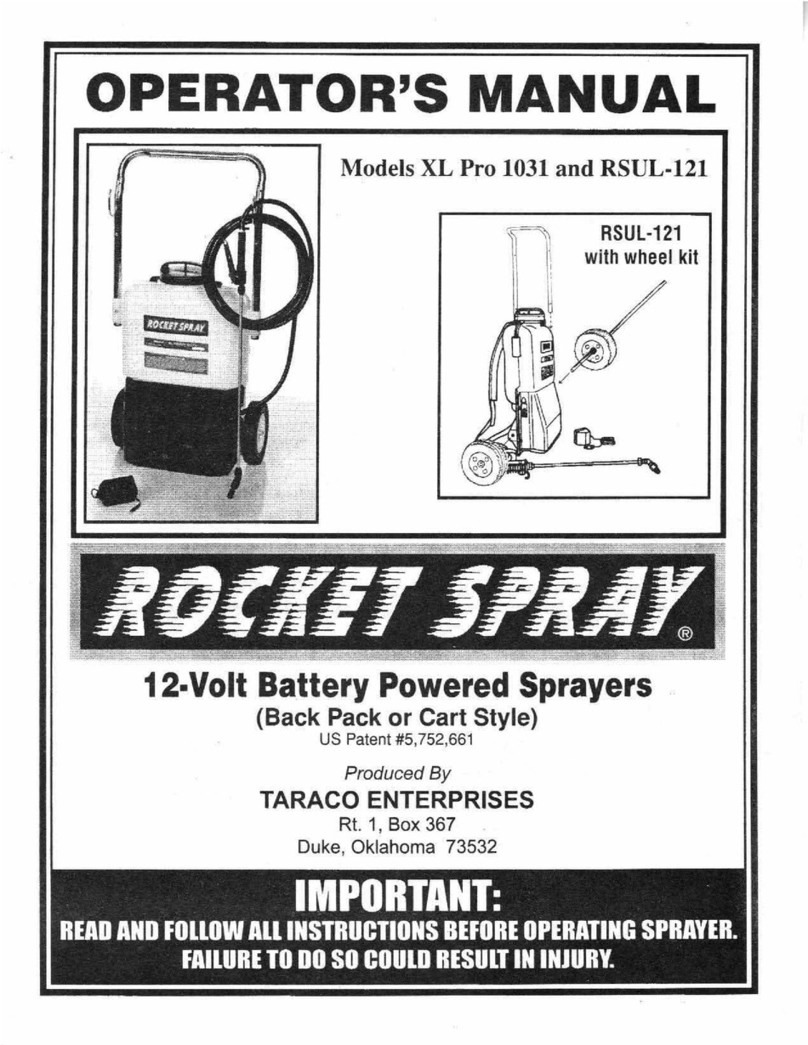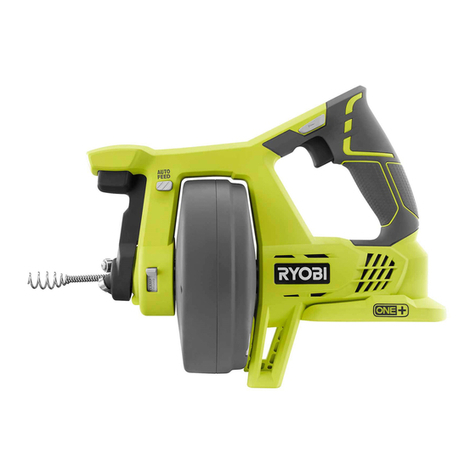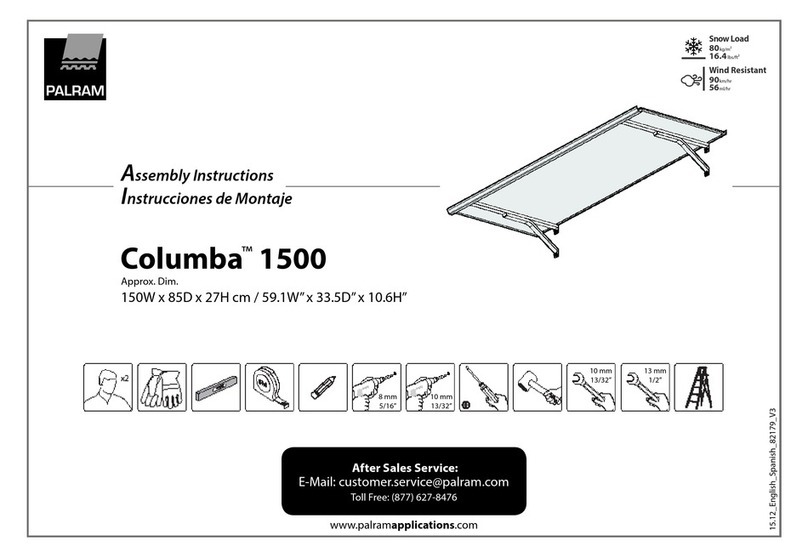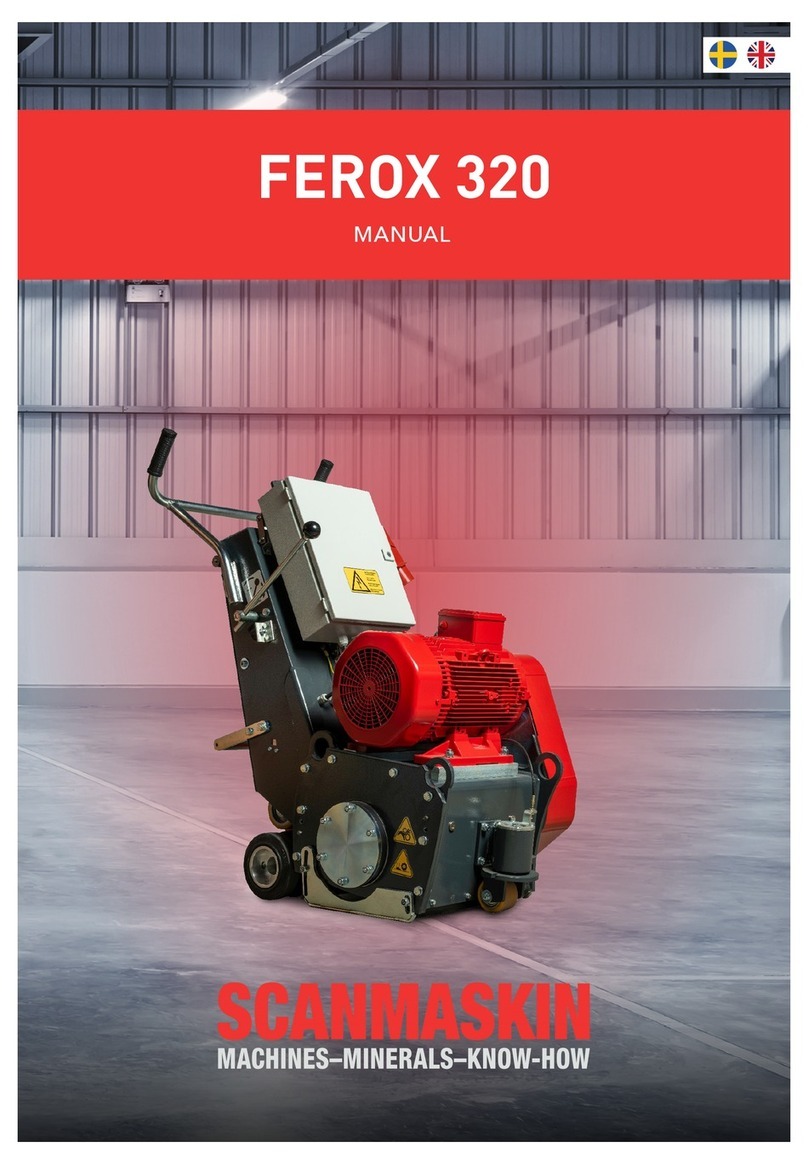Oregon CU600 User guide

Original Instruction Manual
CU600 Multi-attachment


English . . . . . . . . . . . . . . . . . . . . . . . . . . . . . . . . . . . . . . . . . . . . . . . . . . 4
WARNING: Read and understand all safety warnings and all instructions.
Failure to follow the warnings and instructions may result in electric shock, fire and/or serious injury.
Save all warnings and instructions for future reference.
This instruction manual contains translations of a manual drafted in English and are provided to assist those
who do not speak English as their first language. Being a technical writing, some terms may not have a like or
equivalent meaning as translated. Therefore, you should not rely on this translation, and should cross-reference
the English version, where relying on the translated instructions could result in harm to your person or property.
Français. . . . . . . . . . . . . . . . . . . . . . . . . . . . . . . . . . . . . . . . . . . . . . . . . 24
AVERTISSEMENT : Prenez connaissance de tous les avertissements et consignes de sécurité.
L’inobservation de ces avertissements et consignes comporte des risques d’électrocution, d’incendie et/ou
de lésions graves. Rangez ces consignes et avertissements en lieu sûr afin de pouvoir les consulter
ultérieurement.
Ce manuel d’utilisation contient plusieurs traductions d’un document rédigé en anglais. Ces traductions visent
à aider les utilisateurs dont l’anglais n’est pas la langue maternelle. Comme il s’agit d’un document technique,
certains termes sont susceptibles de prendre une signification différente après traduction. Par conséquent,
vous ne devez pas vous fier aveuglément à cette traduction. Reportez-vous à la version anglaise si vous
percevez que le respect des consignes traduites pourrait occasionner des dommages matériels ou des lésions
corporelles.
Español. . . . . . . . . . . . . . . . . . . . . . . . . . . . . . . . . . . . . . . . . . . . . . . . . 44
ADVERTENCIA: Lea y entienda todas las advertencias de seguridad e instrucciones.
El incumplimiento de las advertencias e instrucciones puede dar lugar a descargas eléctricas, incendios o
lesiones graves. Guarde todas las advertencias e instrucciones para referencia futura.
Este manual de instrucciones contiene traducciones de un manual redactado en inglés y se ofrece para ayudar
a aquellos que no hablan inglés como primer idioma. Al tratarse de un texto técnico, algunos términos pueden
no tener un significado similar o equivalente en la traducción. Por lo tanto, no debe confiar en esta traducción, y
debería ir consultando la versión inglesa en aquellos puntos donde la confianza en las instrucciones traducidas
pueda causar daños a su persona o a la propiedad.
Português . . . . . . . . . . . . . . . . . . . . . . . . . . . . . . . . . . . . . . . . . . . . . . . 64
Instrues Importantes de Segurana
ADVERTÊNCIA: Leia e entenda todas as advertências e instruções de segurança. A falha em
seguir todas as advertências e instruções pode resultar em choque elétrico, incêndio e/ou lesão pessoal séria.
Preserve todas as advertências e instruções para consulta futura.
Este manual de instruções contém traduções de um manual escrito em inglês, e tem a finalidade de ajudar
quem não fala inglês como idioma nativo. Como se trata de escrita técnica, alguns termos podem não ter um
significado semelhante ou equivalente quando traduzidos. Portanto, não confie unicamente nesta tradução.
Consulte a versão em inglês quando confiar na tradução em português puder resultar em danos pessoais ou à
propriedade.

4CU600 Multi-attachment
Table of Contents
Important Safety Instructions . . . . . . . . . . . . . . . . . . . . . . . . . . . . . . . . . . . . .5
Safety Signal Definitions . . . . . . . . . . . . . . . . . . . . . . . . . . . . . . . . . . . .5
General Power Tool Safety Warnings . . . . . . . . . . . . . . . . . . . . . . . . . . . .5
Work Area Safety . . . . . . . . . . . . . . . . . . . . . . . . . . . . . . . . . . . . . . . .6
Electrical Safety . . . . . . . . . . . . . . . . . . . . . . . . . . . . . . . . . . . . . . . . .6
Personal Safety . . . . . . . . . . . . . . . . . . . . . . . . . . . . . . . . . . . . . . . . .6
Power Tool Use and Care. . . . . . . . . . . . . . . . . . . . . . . . . . . . . . . . . . . .6
Battery Tool Use and Care . . . . . . . . . . . . . . . . . . . . . . . . . . . . . . . . . . .7
Service . . . . . . . . . . . . . . . . . . . . . . . . . . . . . . . . . . . . . . . . . . . . . . .7
Cultivator Safety Warnings . . . . . . . . . . . . . . . . . . . . . . . . . . . . . . . . . .7
Battery and Charger. . . . . . . . . . . . . . . . . . . . . . . . . . . . . . . . . . . . . . .7
Storage . . . . . . . . . . . . . . . . . . . . . . . . . . . . . . . . . . . . . . . . . . . . . .8
Transport . . . . . . . . . . . . . . . . . . . . . . . . . . . . . . . . . . . . . . . . . . . . .8
Disposal . . . . . . . . . . . . . . . . . . . . . . . . . . . . . . . . . . . . . . . . . . . . . .8
Symbols and Labels . . . . . . . . . . . . . . . . . . . . . . . . . . . . . . . . . . . . . . . . . . .9
Product Identification . . . . . . . . . . . . . . . . . . . . . . . . . . . . . . . . . . . . . . . . . 10
Unpacking and Assembly . . . . . . . . . . . . . . . . . . . . . . . . . . . . . . . . . . . . . . . 11
Battery Pack and Charger . . . . . . . . . . . . . . . . . . . . . . . . . . . . . . . . . . . . . . .13
Operation and Maintenance . . . . . . . . . . . . . . . . . . . . . . . . . . . . . . . . . . . . . 14
General Operation . . . . . . . . . . . . . . . . . . . . . . . . . . . . . . . . . . . . . . . 14
Maintenance . . . . . . . . . . . . . . . . . . . . . . . . . . . . . . . . . . . . . . . . . . 15
Inspection . . . . . . . . . . . . . . . . . . . . . . . . . . . . . . . . . . . . . . . . . . . . 17
Cleaning . . . . . . . . . . . . . . . . . . . . . . . . . . . . . . . . . . . . . . . . . . . . . 17
Troubleshooting. . . . . . . . . . . . . . . . . . . . . . . . . . . . . . . . . . . . . . . . . . . . .18
Specifications and Components . . . . . . . . . . . . . . . . . . . . . . . . . . . . . . . . . . . 19
Warranty and Service . . . . . . . . . . . . . . . . . . . . . . . . . . . . . . . . . . . . . . . . . 20
Figures . . . . . . . . . . . . . . . . . . . . . . . . . . . . . . . . . . . . . . . . . . . . . . . . . . 21
© Blount, Inc. Pricing and specifications subject to change without notice. All rights reserved. Oregon® is a registered trademark of Blount, Inc.
in the United States and/or in other countries.

5
CU600 Multi-attachment
Important Safety Instructions
Important Safety Instructions
Introduction
This Multi-attachment powerhead is designed for use with Oregon® Battery Pack B series and specified
attachments for the general purpose of residential lawn and garden maintenance. Each Oregon®
attachment is designed for a specific task. Other uses may result in injury. Read and follow all instructions
to minimize risk and maximize satisfaction.
Safety Signal Definitions
SYMBOL SIGNAL MEANING
WARNING Indicates a potential hazard which could result in serious injury.
CAUTION Indicates a potential hazard which could seriously damage the tool or
cause minor to moderate injury.
IMPORTANT Following this instruction will increase satisfaction with the tool.
General Power Tool Safety Warnings
When using an electrical appliance, basic precautions should always be followed, including the following:
WARNING: Read and understand all safety warnings and all instructions. Failure
to follow the warnings and instructions may result in electric shock, fire and/or serious injury.
WARNING: This power tool is not intended for use by persons (including children)
with reduced physical, sensory or mental capabilities, or lack of experience and
knowledge, unless they have been given supervision or instruction concerning the use of the
appliance by a person responsible for their safety. Children should be supervised to ensure that
they do not play with the appliance.
Save all warnings and instructions for future reference.

6CU600 Multi-attachment
Important Safety Instructions
Work Area Safety
• Keep work area clean and well lit. Cluttered
or dark areas invite accidents.
• Do not operate power tools in explosive
atmospheres, such as in the presence of
flammable liquids, gases or dust. Power
tools create sparks which may ignite the dust or
fumes.
• Keep children and bystanders away while
operating a power tool. Distractions can cause
you to lose control.
Electrical Safety
• Charger plugs must match the outlet. Never
modify the plug in any way. Unmodified plugs
and matching outlets will reduce risk of electric
shock.
• Do not expose the charger to rain or wet
conditions. Water entering the charger will
increase the risk of electric shock.
• Do not charge outdoors.
• Do not abuse the cord. Never use the cord
for carrying, pulling or unplugging the
charger. Keep cord away from heat, oil,
sharp edges, or moving parts. Damaged or
entangled cords increase the risk of electric
shock.
• Do not use with a damaged cord or plug. If
the battery charger is not working as it should,
has been dropped, damaged, left outdoors, or
dropped into water, return it to a service center.
Personal Safety
• Stay alert, watch what you are doing,
and use common sense when operating a
power tool. Do not use a power tool while
you are tired or under the influence of
drugs, alcohol, or medication. A moment
of inattention while operating power tools may
result in serious personal injury. Maintain correct
working posture, firm footing, and balance during
operation. Reduce fatigue by varying working
position or with rest periods.
• Use personal protective equipment. Always
wear eye protection. Protective equipment
such as dust mask, non-skid safety shoes, hard
hat, or hearing protection used for appropriate
conditions will reduce personal injuries.
• Prevent unintentional starting. Ensure
the switch is in the off-position before
connecting battery pack, picking up, or
carrying the tool. Carrying power tools with
your finger on the switch or energizing power
tools that have the switch on invites accidents.
• Remove any adjusting key or wrench before
turning the power tool on. A wrench or a key
left attached to a rotating part of the power too
may result in personal injury.
• Do not overreach. Keep proper footing
and balance at all times. This enables
better control of the power tool in unexpected
situations.
• Dress properly. Do not wear loose clothing or
jewelry. Keep your hair, clothing, and gloves
away from moving parts. Loose clothes,
jewelry, or long hair can be caught in moving
parts.
Power Tool Use and Care
• Do not force the power tool. Use the correct
power tool for your application. The correct
power tool will do the job better and safer at the
rate for which it was designed.
• Do not use the power tool if the variable
speed trigger does not turn it on and off. Any
power tool that cannot be controlled with the
switch is dangerous and must be repaired.
• Disconnect the battery pack from the
power tool before making any adjustments,
changing accessories, or storing power
tools. Such preventive safety measures reduce
the risk of starting the power tool accidentally.
• Store idle appliance indoors. When not in
use, appliances should be stored indoors in a
dry and high or locked-up place out of reach
of children. Do not allow persons unfamiliar
with the power tool or these instructions to
operate power tool. Power tools are dangerous
in the hands of untrained users.
• Maintain power tools. Check for
misalignment or binding of moving parts,
breakage of parts, and any other condition
that may affect the power tool’s operation.
If damaged, have the power tool repaired
before use. See “Inspection” in this manual.
Many accidents are caused by poorly maintained
power tools.

7
CU600 Multi-attachment
Important Safety Instructions
• Keep cutting tools sharp and clean. Properly
maintained cutting tools with sharp cutting
edges are less likely to bind and are easier to
control.
• Use the power tool, accessories, and
tool bits, etc. in accordance with these
instructions, taking into account the working
conditions and the work to be performed.
Use of the power tool for operations different
from those intended could result in a hazardous
situation.
Battery Tool Use and Care
• Recharge only with the charger specified by
the manufacturer. A charger that is suitable for
one type of battery pack may create a risk of fire
when used with another battery pack.
• Use power tools only with specifically
designated battery packs. Use of any other
battery packs may create a risk of injury and fire.
• When battery pack is not in use, keep it
away from other metal objects, like paper
clips, coins, keys, nails, screws, or other
small metal objects, that can make a
connection from one terminal to another.
Shorting the battery terminals together may
cause burns or a fire.
• Under abusive conditions, liquid may be
ejected from the battery; avoid contact.
If contact accidentally occurs, flush with
water. If liquid contacts eyes, additionally
seek medical help. Liquid ejected from the
battery may cause irritation or burns.
Service
Have your power tool serviced by a
qualified repair person using only identical
replacement parts. This will ensure that the
safety of the power tool is maintained. Attempting
to perform service or maintenance outside of
the scope of this manual or failure to perform
recommended inspection and cleaning may cause
denial of warranty claims.
Cultivator Safety Warnings
WARNING: Keep hands away from tines.
Contact with tines will result in serious
personal injury.
• Keep all parts of the body away from the
tines. Do not remove cut material or hold
material to be cut when tines are moving.
Make sure the variable speed trigger is off
when clearing jammed material. Tines coast
after turn off. A moment of inattention while
operating the cultivator may result in serious
personal injury.
• Keep guards in place and in working order
Battery and Charger
• Use only the Oregon B Series batteries.
• Ensure the switch is in the off position
before inserting battery pack. Inserting the
battery pack into machines that have the switch
on invites accidents.
• Do not charge battery in rain or in wet
locations.
• Keep the battery charger away from rain or
moisture. Penetration of water in the battery
charger increases the risk of an electric shock.
• Recharge battery only with the charger
specified by the manufacturer (Oregon C
Series chargers). A charger that is suitable for
one type of battery pack may create a risk of fire
when used with another battery pack.
• Do not dispose of the battery in a fire. The
cell may explode. Check with local codes for
possible special disposal instructions.
• Do not charge other batteries on the charger.
The battery charger is suitable only for charging
manufacturer specific and approved lithium
ion batteries within the listed voltage range.
Otherwise there is danger of fire and explosion.
• Keep the battery charger clean.
Contamination can lead to danger of an
electric shock.
• Before each use, check the battery charger,
cable, and plug. If damage is detected, do
not use the battery charger. Never open
the battery charger yourself. Have repairs
performed only by a qualified technician and
only using original spare parts. Damaged
battery chargers, cables, and plugs increase the
risk of an electric shock.

8CU600 Multi-attachment
Important Safety Instructions
• Do not operate the battery charger on easily
inflammable surfaces (e.g., paper, textiles,
etc.) or surroundings. The heating of the
battery charger during the charging process can
pose a fire hazard.
• Use only appropriate battery packs
intended specifically by the manufacturer
for the machine. Use only the Oregon B Series
batteries. Use of any other battery packs may
create a risk of injury and fire.
• Exercise care in handling batteries in order not
to short the battery with conducting materials
such as rings, bracelets, and keys. The battery or
conductor may overheat and cause burns.
• Under abusive conditions, liquid may be
ejected from the battery; avoid contact.
If contact accidentally occurs, flush with
water. If liquid contacts eyes, additionally
seek medical help. Liquid ejected from the
battery may cause irritations or burns.
• Do not open or mutilate the battery. Released
electrolyte is corrosive and may cause damage
to the eyes or skin. It may be toxic if swallowed.
• Protect the battery against heat, e.g.,
against continuous intense sunlight, fire,
water, and moisture. Failure to do so, may
increase the danger of explosion.
• Do not short-circuit the battery. There is
danger of explosion.
• In case of damage and improper use of the
battery, vapors may be emitted. Ventilate
the area and seek medical help in case
of complaints. The vapors can irritate the
respiratory system.
• Protect the battery against moisture and water.
• Store the battery only within a temperature
range between °F and °F (°C and °C).
As an example, do not leave the battery in the
car in summer.
• Occasionally clean the venting slots of the
battery using a soft, clean, and dry brush.
Storage
• Always store the powerhead and attachments in
a cool, dry place and out of direct sunlight. Long
exposure to sunlight and UV rays can degrade
plastics overtime, potentially causing guards to
fail.
• Fit the protective cap on the drive tube to avoid
dirt getting into the coupler.
Transport
• The contained lithium-ion batteries are
subject to the Dangerous Goods Legislation
requirements. The user can transport the
batteries by road without further requirements.
• When being transported by third parties (e.g.:
air transport or forwarding agency), special
requirements on packaging and labeling must
be observed. For preparation of the item being
shipped, consulting an expert for hazardous
material is required.
• Dispatch batteries only when the housing is
undamaged.
• Tape or mask off open contacts and pack up the
battery in such a manner that it cannot move
around in the packaging.
• Please also observe possibly more detailed
national regulations.
Disposal
• Do not dispose of garden products, battery
chargers, and batteries/rechargeable batteries
into household waste.

9
CU600 Multi-attachment
Symbols and Labels
Symbols and Labels
These symbols and labels appear on the cultivator, battery, and charger.
SYMBOL NAME EXPLANATION
Class II
Construction Designated double insulated construction tools.
Safety Alert
Symbol
Indicates that the text that follows explains a danger, warning, or
caution.
Read Instruction
Manual
The original instruction manual contains important safety and
operating information. Read and follow the instructions carefully.
Beware Of Foreign
Objects
Pay attention that bystanders are not injured through foreign
objects thrown from the machine.
Minimum
50 ft (15 m)Bystander Safety Keep bystanders a safe distance away from the machine.
Rotating Tines DANGER: Keep hands and feet away from rotating tines.
Rotating tines will cause injury.
Wear Eye
Protection Wear eye protection when operating the machine.
Wear Hearing
Protection Wear hearing protection when operating the machine.
Wear Foot
Protection
Wear appropriate closed-toe work boots when operating the
machine.
Wear Hand
Protection
Wear gloves when operating the machine or touching the stopped
tines.
Wear Long Pants Wear long pants when operating the machine.
90
Sound Power Sound power level is 90 dB.
Do Not Incinerate Do not dispose in flames.
Do Not Dispose Do not throw in the household waste. Take to an authorized
recycler.
Do Not Expose to
Rain Do not operate the charger in wet conditions.
Indoor Use Only Intended for indoor use only.
Operating
Temperature
Only use the battery pack at a temperature between 32°F to
104°F (0°C and 40°C).
Remove Battery Remove the battery before performing any maintenance.

10 CU600 Multi-attachment
Product Identification
Product Identification
Protective Cap Hitch Pin Interior Tine
Coupler Gear Box
Exterior Tine
Drive Tube Felt washer
Tine shaft
Guard Exterior Tine
Flat edge
Tines
Interior Tine
Angled edge

11
CU600 Multi-attachment
Unpacking and Assembly
Unpacking and Assembly
Unpacking
WHAT’S IN THE BOX?
These items ship with the cultivator:
• Cultivator attachment
• Original Instruction Manual
After removing the cultivator from the box, inspect
it carefully to ensure no damage has occurred
during shipping and that no parts are missing. If
any parts are damaged or missing, do not use the
cultivator. Contact Oregon® Cordless Tool System
at .. to obtain replacement parts or
contact your local dealer.
Assembly
WARNING: A battery operated tool
with the battery pack inserted can start
accidentally. Remove the battery pack before
assembling or performing maintenance.
INSTALLING AN ATTACHMENT TO
THE POWERHEAD (FIG. A)
WARNING: Read and understand entire
Original Instruction Manual for each optional
attachment used on this powerhead and
follow all warnings and instructions. Failure
to follow all instructions could result in
electric shock, fire, and/or serious personal
injury.
WARNING: This powerhead is designed
to be used only with the Oregon attachment
models that are specified in this Original
Instruction Manual. Use of other attachments
could cause serious personal injuries or
property damage.
This powerhead may be used with only Oregon
Multi-attachments.
The attachment connects to the powerhead with a
coupler device.
• Stop the motor and remove the battery pack.
• Loosen the knob of the coupler on the
powerhead tube and remove the end cap from
the attachment.
• Press the button located on the attachment
shaft. Align the button with the guide recess on
the powerhead coupler and slide the attachment
shaft into the powerhead. Rotate the attachment
shaft until the button locks into position.
NOTE: If the button does not release completely
in the positioning hole, the shafts are not locked
into place. Slightly rotate from side to side until
the button is locked.
• Tighten the knob securely.
WARNING: Make certain the device is fully
tightened before operating equipment; check
it periodically for tightness during use to
avoid serious personal injury.

12 CU600 Multi-attachment
Unpacking and Assembly
REMOVING THE ATTACHMENT
FROM THE POWERHEAD
• Stop the motor, remove the battery pack, and
engage the transportation lock-out.
• Loosen the knob.
• Push in the button and twist the shafts to
remove and separate the shaft.
THE POWERHEAD EXTENSION (FIG. B)
WARNING: Do not use the extension with
the cultivator attachment.

13
CU600 Multi-attachment
Battery Pack and Charger
Battery Pack and Charger
WARNING: To reduce the risk of shock, do
not charge the battery pack in the rain.
BATTERY PACK LED CHARGE-LEVEL INDICATOR
The lithium ion battery pack is equipped with an
LED charge-level indicator. To test the charge
level of the battery pack, press the indicator
button on the battery pack’s face.
No lights: recharge.
One steady green light:
less than charged.
Charge battery pack before use.
Two steady green lights:
– charged.
Three steady green lights:
– charged.
Four steady green lights:
– charged.
CONNECTING THE CHARGER
If the charger includes a separate power cord,
connect the charger cord to the charger and to the
proper electrical outlet.
Only use the cord set that was supplied with
the charger. At first use, verify that the plug type
matches the receptacle.
CHARGER LED CHARGE-STATE INDICATOR
The battery charger is equipped with an LED
charge-state indicator that indicates the state of
charging as well as conditions that may delay or
prevent charging.
Note: Until a battery pack is inserted, no lights will
be visible.
Blinking orange light: a fault condition
exists. There are several potential causes.
See “Troubleshooting” in this manual.
Steady orange light: the battery pack
temperature is beyond the acceptable
range (°F/°C to °F /°C). Allow
the battery pack to reach the acceptable
temperature range before charging. The
pack may be left on the charger as the
temperature adjusts. Charging will begin
when the proper temperature is reached.
Blinking green light: battery pack is
charging.
Steady green light: battery pack is ready
for use.
CHARGING THE BATTERY
WARNING: Failure to follow proper
charging procedures may cause excessive
voltage, excessive current flow, loss of
control during charging, leakage of hazardous
chemicals, heat generation, bursting or fire.
Follow these charging instructions.
With the charger cord connected to the charger
and plugged into a electrical outlet, align the
grooves on the battery with the rails on the
charger and slide the battery pack onto the
charger until fully seated.
For more information, please refer to your
battery and charger manuals.
INDICATOR LIGHTS
INDICATOR BUTTON

14 CU600 Multi-attachment
Operation and Maintenance
Operation and Maintenance
General Operation
WARNING: To reduce the risk of injury,
always wear proper boots, long pants, ear
and eye protection.
WARNING: To reduce the risk of injury, do
not overreach and do not stand on a ladder,
stepstool, or any raised position that is not
fully secured.
CAUTION: Establish a bystander safety
zone of 50 ft (15 m) prior to operation of
this equipment. Bystander safety zone
is a minimum 50 ft (15 m) circle around
the operator that must remain free from
bystanders, children, and pets.
To get the best performance and operate the
powerhead and attachments safely, follow these
instructions.
Before using, inspect the powerhead and
attachments as described in “Maintenance”.
Always refer to the original instructions provided
with the attachment for additional use and safety
instructions. Failure to do so may result in injury.
OPERATING TEMPERATURE
The powerhead and attachments are designed
to operate within a temperature range of °F to
°F (°C to °C).
FOOTING
Stand with both feet on solid ground with weight
evenly spread between them.
Be careful on stairs, and work slowly to maintain
footing. Never run when operating the powerhead.
ENGAGING THE TRANSPORTATION
LOCKOUT (FIG. C)
• Move the button to the right to engage the
transportation lockout.
• Move the button the the left to disengage the
transportation lockout when you want to start
the tool.
STOPPING THE POWERHEAD (FIG. D)
Release the variable speed trigger to stop the
powerhead.
STARTING THE POWERHEAD (FIG. E)
WARNING: To reduce the risk of injury,
never defeat the trigger-lock lever by taping,
wiring, or tying down the trigger-lock lever.
• Disengage the transportation lockout () by
moving the button to the left.
• Grasp the handle firmly such that the trigger-
lock lever () is depressed by the palm of the
hand.
• To start the powerhead, squeeze the variable
speed trigger (). Squeeze the variable speed
trigger more firmly to increase the speed and force
of the powerhead.
INSERTING AND REMOVING THE
BATTERY PACK (FIG. F)
Only use the Oregon® brand battery packs
specified in these operating instructions.
Align the groove in the battery with the rails
inside the battery port. Firmly insert the battery
pack into the powerhead’s battery port, pressing
forward until it clicks as it locks into place.
To remove the battery pack, lift up on the battery
release, grasp the sides of the battery pack and
remove it.

15
CU600 Multi-attachment
Operation and Maintenance
APPLICATIONS
You may use the cultivator for the following tasks:
• Aerate or break up soil in your garden to prepare
for planting.
• Removal of weeds.
OPERATING THE CULTIVATOR (FIG. G)
WARNING: Always hold the cultivator
away from the body keeping clearance
between the body and the tool. Any contact
with an attachment cutting head can result in
burns and/or other serious personal injury.
If debris becomes wrapped around the
attachment, release the variable speed trigger,
remove the battery pack, and remove the debris.
Hold the cultivator attachment firmly with both
hands: use your right hand for the rear handle and
the left for the front handle.
The cultivator has a variable speed trigger.
Operating the cultivator at partial throttle will be
sufficient for virtually all soil types. Consistently
using the cultivator at full throttle will reduce the
lifespan of the drive train and engine.
• Bring the cultivator to the work area before you
start the engine.
• Make sure you are working on level ground. Refer
to the section of this manual entitled “Starting
the Powerhead” and start the engine.
• Hold both handles firmly, and then press the
trigger until you reach a steady, moderate speed.
Lower the cultivator until the tines make contact
with the ground.
• Pull the cultivator toward you carefully while the
tines work the ground.
NOTE: Carefully pulling the cultivator toward you
as you work will make tilling easier because it will
reduce your exertion.
Maintenance
WARNING: A battery operated tool
with the battery pack inserted can start
accidentally. Remove the battery pack
before inspecting, cleaning, or performing
maintenance.
CAUTION: Inspect the cultivator regularly.
Regular inspection is the first step to proper
maintenance. Follow the guidelines below to
maximize safety and satisfaction. Have any
damaged or excessively worn parts replaced
immediately.
CAUTION: When cleaning the cultivator, do
not immerse in water or other liquids. Do not
use a pressure washer to clean the cultivator.
GENERAL MAINTENANCE
Do not use solvents or abrasive chemicals when
cleaning any of the sweeper's plastic parts. Most
plastics can be damaged by commercial solvents
and cleaners. Use a soft cloth to wipe any dirt,
grease, dust, or other debris off the sweeper.
WARNING: Do not allow petroleum-based
products, brake fluid, or gasoline to contact
the unit’s plastic parts. Chemicals can
damage or destroy the plastic, which may
result in serious personal injury.
TINE MAINTENANCE
• Apply a few drops of lubricant to the shaft
occasionally. This will keep the tines working in
optimal condition.
• Always replace all four tines at the same time if
any of the tines show wear.

16 CU600 Multi-attachment
Operation and Maintenance
REPLACING THE TINES (FIG. H)
Disconnect the battery before changing
accessories, moving the cultivator, or making
any other adjustments.
The cultivator has four tines – the two inner tines
are labeled () and () in this manual, and the
two outer tines are labeled () and (). The
tines must be installed in the correct order so the
cultivator operates as intended.
• Place tine () on the tine shaft to the left of
the gear box. There is a stamp on the tine; the
stamped side should face away from the gear
box.
• Place tine () on the tine shaft to the right of
the gear box. There is a stamp on the tine; the
stamped side should face away from the gear
box.
• Place a felt washer () on each side of the tine
shaft. Slide the washers so they rest against the
inner tines.
• Place the outer tine () on the left side of the
tine shaft. There is a stamp on the tine; the
stamped side should face tine ().
• Place the outer tine () on the right side of
the tine shaft. There is a stamp on the tine; the
stamped side should face tine ().
• To secure the tines to the shaft, insert the hitch
pin into the holes located on either side of the
shaft.
NOTE: The cultivator will not operate properly if
the tines are incorrectly installed. The tines are
property installed when the angled edge of the
tine tines face the ground.
NOTE: If you have a problem with cultivator’s
operation, make sure the times are properly
positioned.
REGULAR TINE PATTERN (FIG. I)
The tine pattern is factory set. This regular tine
pattern is optimal for most outdoor applications.
NOTE: Pay close attention to how the tines are
oriented to the hub position.
NARROW TINE PATTERN (FIG. J)
A narrow tine pattern may be helpful for tilling a
confined area.
Follow these directions to set the narrow tine
pattern:
• Remove hitch pins () from each side of the
cultivator.
• Remove the left and right outer tines () and
().
• Remove the felt washers ().
• Replace the hitch pin () from the alternate
holes on each side of shaft.
NOTE: Do not force the tines. If you experience
difficulty removing the tines, apply lubricant to
the shaft. When reinstalling the tines, clean and
lubricate the shaft, as well as the tine hubs.
ROCKY OR STONY SOIL TINE PATTERN (FIG. K)
Rocky or stony soil may jam the cultivator. The
rocky soil tine pattern can help correct this
problem. This tine pattern’s center gap is wider
than the regular tine pattern. This will result in
fewer rock jams, but it will also require additional
passes when you till an area.
This is how to configure the rocky soil tine pattern:
• Remove hitch pins () from each side of the
cultivator
• Remove tines and felt washers () from the
shaft.
• Reinstall tines () and () on opposite sides
of the shaft. Tine () will now be on the left and
() will be on the right.
• Reinstall tines () and (). Tines () and ()
will now be on one side; tines () and () will
be on the other side.
• Replace the hitch pins.
NOTE: Pay close attention to how the tines are
oriented to the hub position.

17
CU600 Multi-attachment
Operation and Maintenance
Inspection
Before each use, and if the cultivator has been
dropped, inspect these parts:
CULTIVATOR
Check guards and moving parts for any signs of
damage.
POWERHEAD
• The handle should not have cracks or other
damage. It should be clean, dry, and free of oil,
moisture, or anything else that prevents a firm
grip.
• The electronics cooling vent should be clear and
free of debris.
• The battery pack should be clean, dry, and show
no signs of puncture, impact, or other damage.
The contacts should be clean, dry, and free of
debris.
• The battery port and contacts should be clean,
dry, and free of debris.
• The variable speed trigger should operate
smoothly and should cause increased powerhead
speed with increased pressure.
• The variable speed trigger should prevent the
motor starting if it is not depressed.
• Screws should be tight and hold each component
in place.
Cleaning
CAUTION: When cleaning the powerhead
and attachments, do not immerse in water or
other liquids. Do not use a pressure washer to
clean the powerhead and attachments.
• Remove the battery.
• Remove any debris from the intake screen to
ensure unrestricted airflow.
• Clear any debris from the battery port and wipe
the contacts.
• Wipe dust and clippings from the cultivator.
BATTERY PACK
IMPORTANT: There are no user serviceable
parts inside the battery pack. Do not
disassemble.
Lithium ion batteries have a finite operating life.
If the amount of use time per charge decreases
noticeably under normal use, the battery pack is
at the end of its useful life and should be replaced.
• Make sure the battery pack, including the
contacts, is clean, dry, and has no signs of
puncture, impact, or other damage. Broken
batteries can cause fires or emit hazardous
chemicals.
• Clean dirty contacts with a soft, dry cloth. Dirt
or oil can cause a poor electrical connection
resulting in loss of power.
• Store battery with a full charge, on a charger
when possible.
CHARGER
IMPORTANT: There are no user serviceable
parts inside the charger. Do not disassemble.
• Unplug the charger from the electrical outlet.
• Clean dirty contacts with a soft, dry cloth.

18 CU600 Multi-attachment
Troubleshooting
Troubleshooting
Use this table to see possible solutions for problems with the cultivator. If these suggestions do not
solve the problem, see “Warranty and Service”.
SYMPTOM POSSIBLE CAUSE RECOMMENDED ACTIONS
Cultivator vibrates
excessively during
use
Tines are damaged Replace with new Oregon tines.
Tines are not attached
properly
Remove the tines and reinstall. See "Replacing the
Tines".
The cultivator does
not cut properly The tines are dull Sharpen the tines or contact your local Oregon
representative.

19
CU600 Multi-attachment
Specifications and Components
Specifications and Components
WARNING: Using replacement parts other than those specified in this instruction manual
increases the risk of injury. Never use attachments other than those described in this manual.
REPLACEMENT COMPONENTS NA P/N EU P/N
Battery pack, model B425E 545938 562625
Battery pack, model B600E 548208 562391
Battery pack, model B650E 545937 583689
Charger with cord, model C650 594076 594078
Rapid charger with cord, model C750 548185 558697
CHARGER, MODEL C650
Input 100-240V~ 50-60Hz 60W
Input (U.S. and Canada only) 120V~ 60Hz 60W
Output 41.5V 1.8A
Power cord US/CAN P/N: 546636 EU P/N: 547383
UK P/N: 547384 AU/NZ P/N: 560663
CHARGER, MODEL C750
Input 100-240V~ 50-60Hz 260W
Input (U.S. and Canada only) 120V~ 60Hz 260W
Output 41V 4.6A
Power cord US/CAN P/N: 585068 EU P/N: 585069
UK P/N: 585070 AU/NZ P/N: 585073
BATTERY PACK
Type Lithium Ion
Operating temperatures 32°F TO 104°F (0°C TO 40°C)
Model Capacity, nominal Voltage, nominal
B425E 2.6 Ah / 94 Wh +36 VDC
B600E 4.0 Ah / 144 Wh +36 VDC
B650E 6.0 Ah / 216 Wh +36 VDC
CULTIVATOR
Tine size 8.7 in (220 mm)
Tilling depth 4.25 in (108 mm)
Tilling width 9.85 in (250 mm)
Weight 13.8 lb (6.27 kg)
Sound pressure level at operator's ear (K=3dB(A) 76.9 dB(A)
Sound power level (K=3dB(A) 90.3 dB(A)

20 CU600 Multi-attachment
Warranty and Service
Warranty and Service
Warranty
Blount, Inc. warrants all registered Oregon®
Cordless Tools and Chargers for a period of three
() years and all registered Oregon® Cordless
Battery packs for two () years from original date
of purchase. Registered Oregon® Cordless Tools,
Battery Packs and Chargers are warranted for
two () years if used for commercial purchases.
This limited warranty applies to Oregon® Cordless
Tools System manufactured products. During
the warranty period, Blount will replace or, at
its option, repair for the original purchaser only,
free of charge, any product or part which is found
upon examination by Blount to be defective in
material and/or workmanship. The purchaser
shall be responsible for all transportation charges
and any cost of removing any part submitted for
replacement under this warranty.
To register your product, visit the “support”
section of OregonCordless.com.
Service and Support Information
Visit us on the web at OregonCordless.com
for service center information, or contact our
customer service department at .. for
assistance, additional technical advice, repair, or
replacement parts.
For safety, use only genuine factory replacement
parts on the power tool. Our service center is
staffed with trained personnel to efficiently
provide support and assistance with adjustment,
repair, or replacement of all Oregon®Cordless
Tool System products.
Table of contents
Languages:
Other Oregon Lawn And Garden Equipment manuals
Popular Lawn And Garden Equipment manuals by other brands

Acorn Safety
Acorn Safety S0001 Installation, operation and maintenance instructions
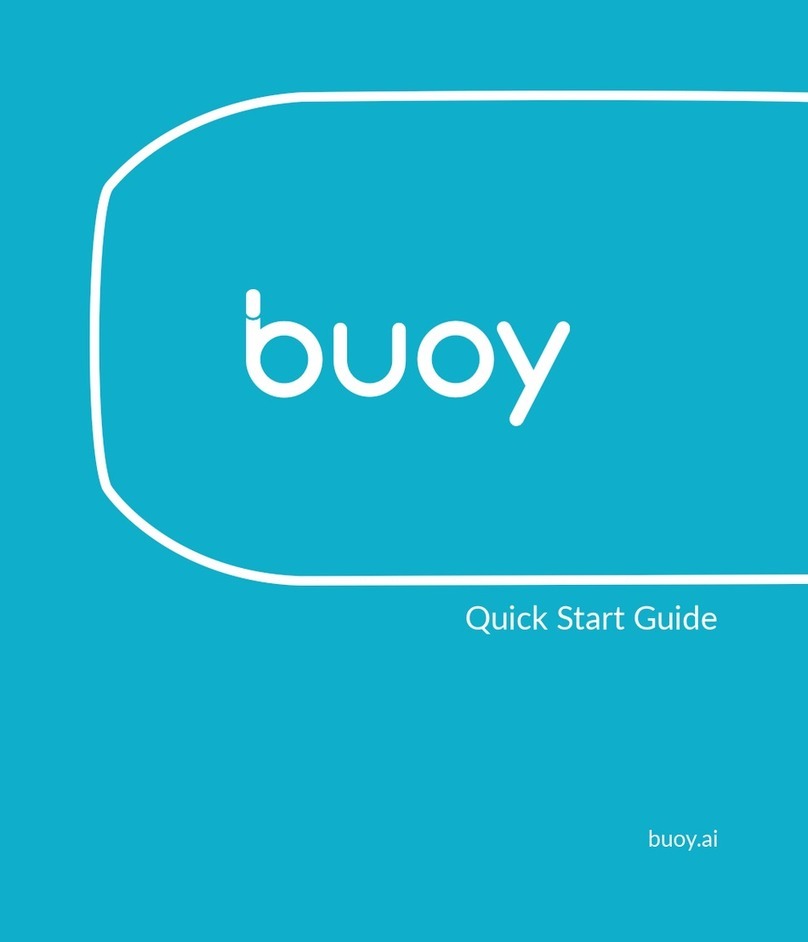
Buoy Labs
Buoy Labs buoy quick start guide

Eurotops
Eurotops 45228 manual
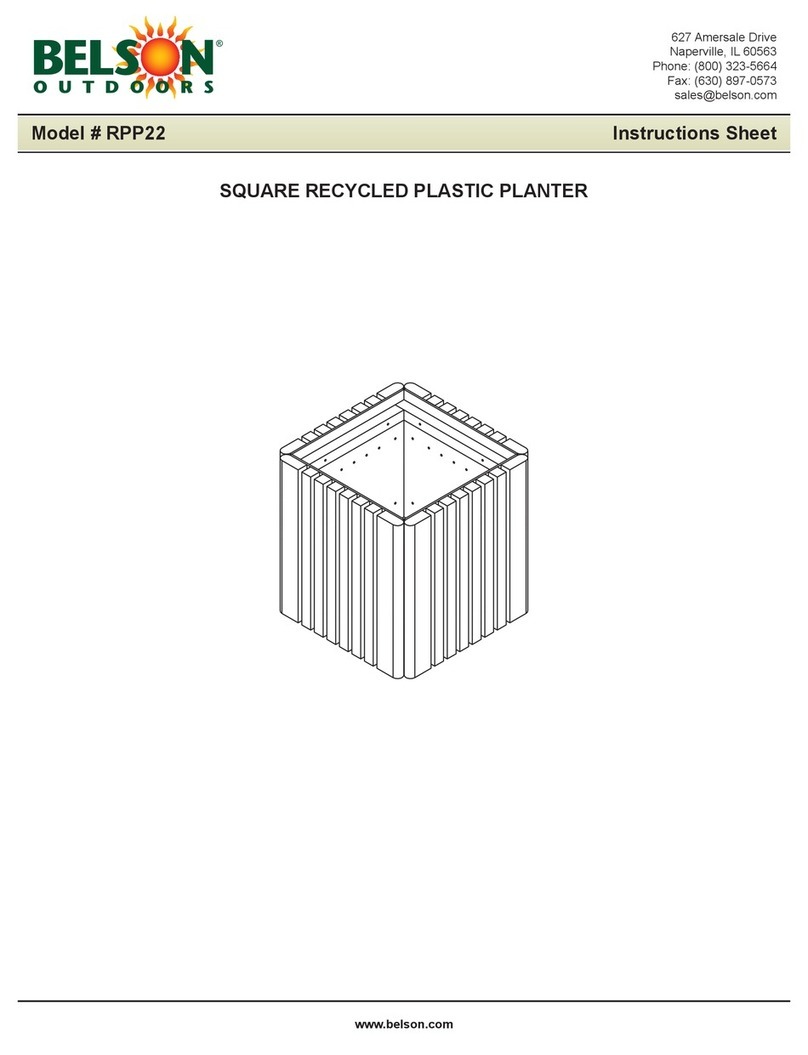
Belson Outdoors
Belson Outdoors RPP22 instruction sheet

Anova
Anova VAR700 Installation instructions & user manual

Skaza
Skaza Bokashi Organko Instructions for use
